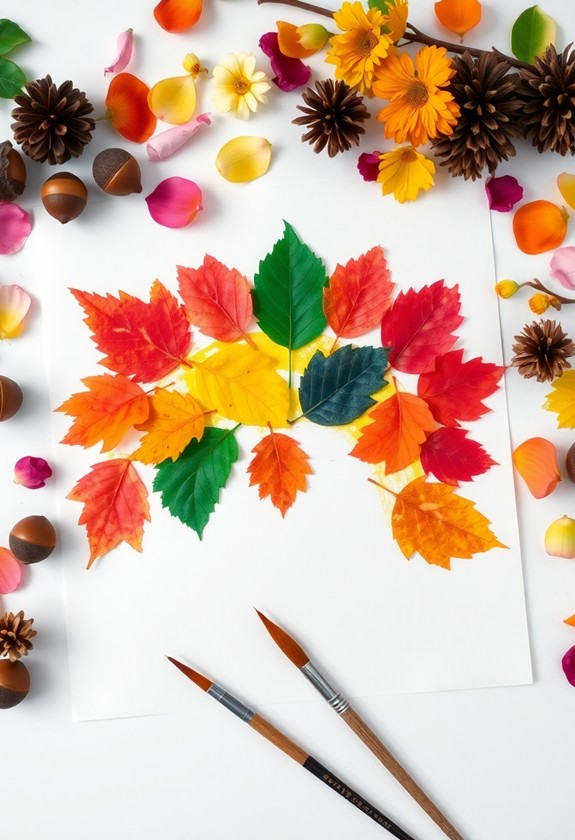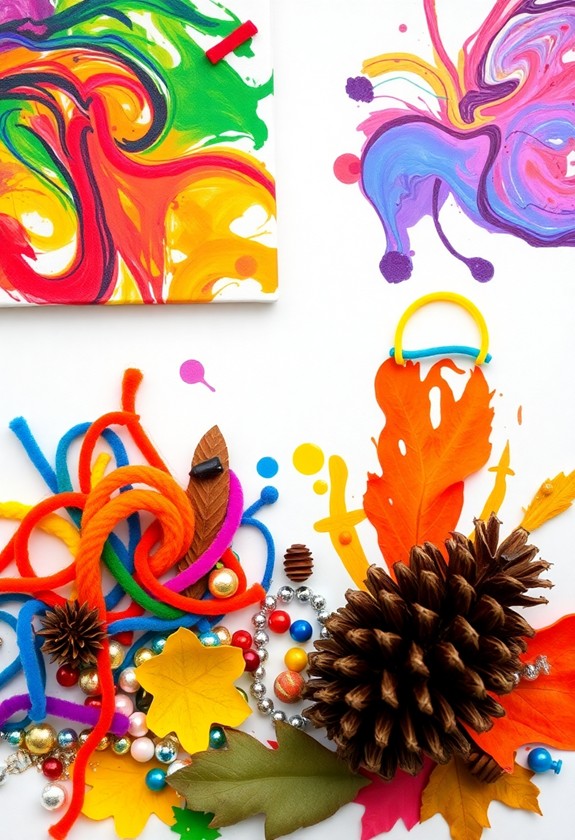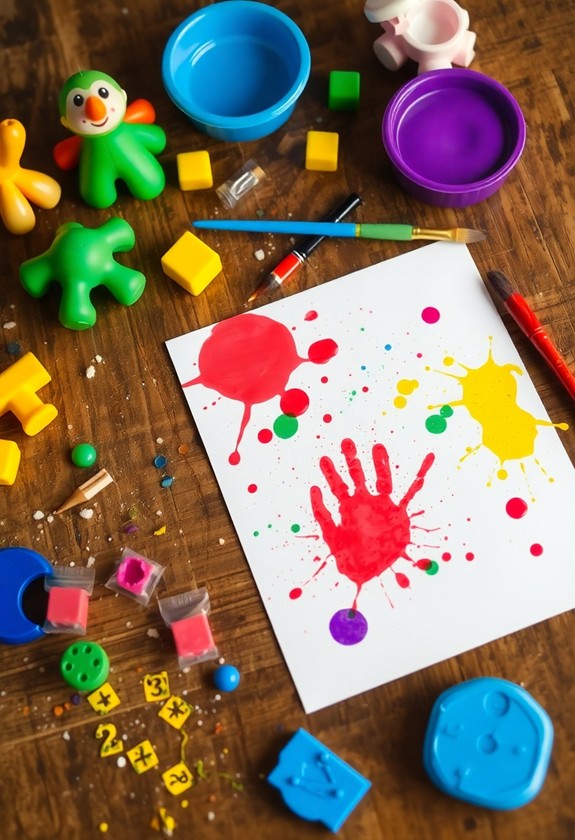Get ready for some emotional art fun with your toddler! These 8 sensory activities are perfect for uncovering feelings: Finger painting, emotion-themed play dough, texture collages, squishy emotion bags, scented art, music-inspired drawing, sensory bottles, and sand art. Each one lets your little one express themselves through touch, smell, sight, and sound. They'll squish, swirl, and create as they learn about different emotions. It's a fantastic way to boost their emotional intelligence and have a blast together! From calming glitter bottles to angry red finger paints, you'll find so many exciting ways to connect and grow. Stick around to find out how these activities can transform your toddler's emotional expedition!
Creative Highlights
- Finger painting allows toddlers to express emotions through color and tactile exploration, promoting emotional discussions and stress relief.
- Emotion-themed play dough encourages sculpting faces to express feelings, enhancing emotional intelligence through color association.
- Texture collages for moods use various materials to represent different emotions, fostering self-expression and sensory exploration.
- Music-inspired emotion drawing leverages tunes to elicit emotional responses, encouraging artistic expression of feelings through colors and shapes.
- Sensory bottles filled with glitter and colored water represent emotions, serving as calming tools during emotional moments.
Finger Painting Feelings
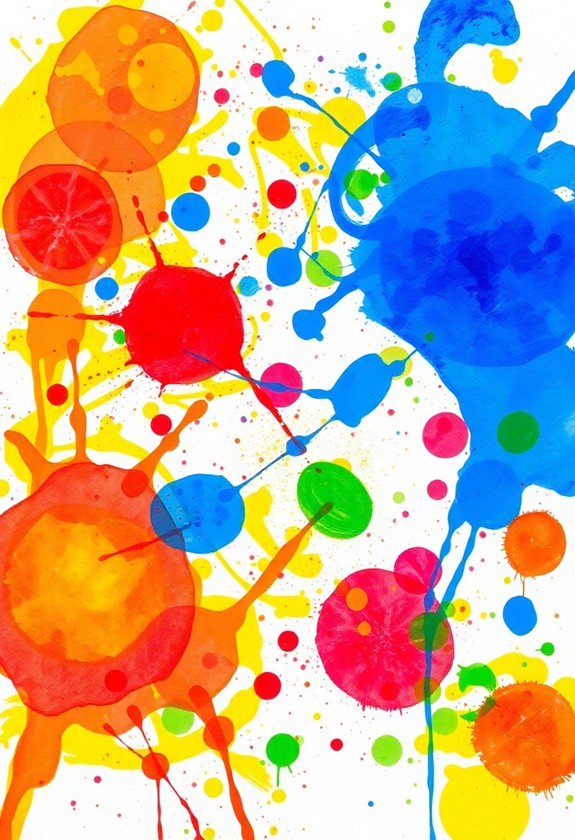
Get down and dirty with finger painting to help your toddler express emotions. This messy, fun activity is perfect for little hands and big feelings! Here's how to get started:
- Set up a safe painting area with washable paints and paper.
- Talk about different emotions with your child.
- Encourage them to pick colors that match each feeling.
Sensory investigation through textures and colors improves emotional expression and stress relief for your little one. This activity is especially beneficial for children with Sensory Processing Disorders (SPD), as it promotes sensory integration and can help reduce anxiety.
Let your toddler go wild! They can swirl, smear, and splat paint to their heart's content. Ask questions like, "How does angry look?" or "What color is happy?" As they create, chat about the emotions they're examining.
Don't forget to join in! Your participation will make the experience even more enjoyable. Plus, you'll create lasting memories as you help your little one understand and express their feelings. It's a win-win situation!
Emotion-Themed Play Dough
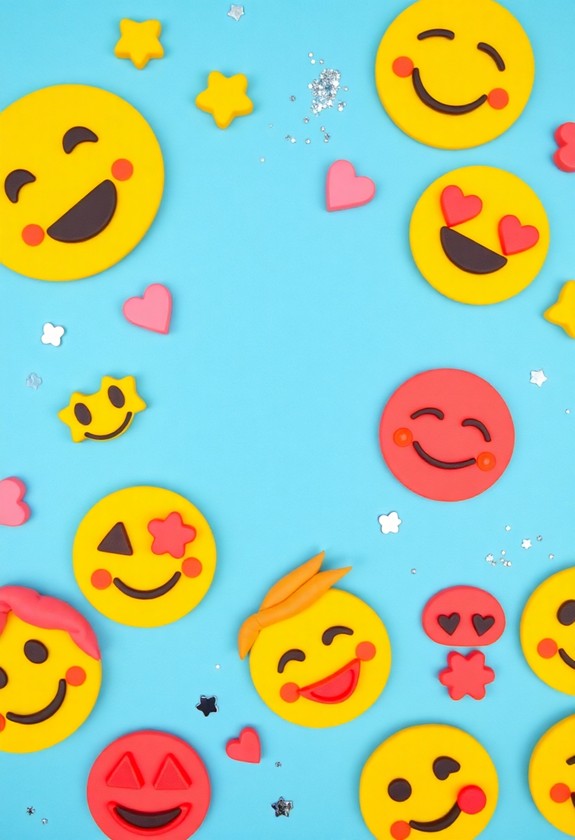
Play dough is a fantastic medium for examining emotions with your toddler. It's squishy, malleable, and oh-so-fun to manipulate! Here's how to create emotion-themed play dough:
- Make different colors for various emotions:
- Red for anger
- Blue for sadness
- Yellow for happiness
- Green for jealousy
This hands-on activity helps toddlers connect colors and shapes with feelings, boosting their emotional intelligence. It's a dough-lightful way to investigate emotions!
Texture Collages for Moods
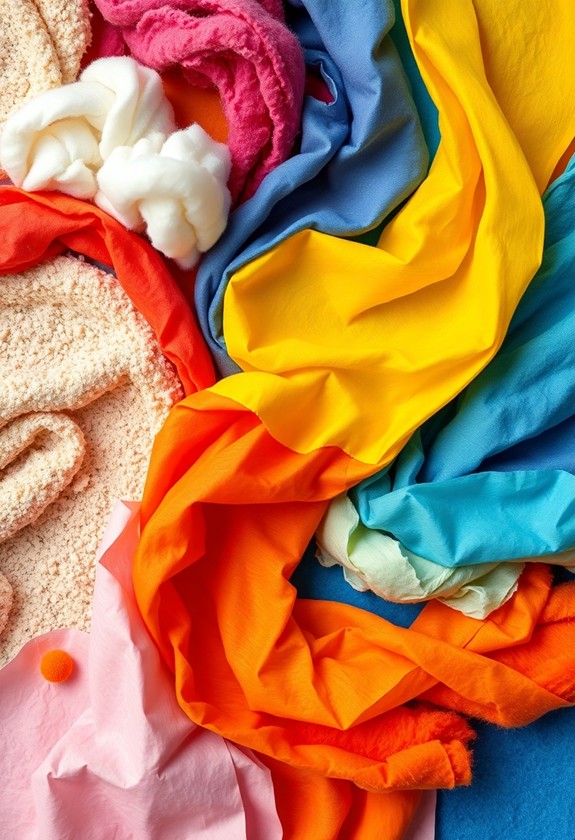
Texture-rich collages offer a hands-on way for toddlers to examine and express different moods. This activity is a sensory sensation! You'll need various textured materials like soft cotton, rough sandpaper, and smooth silk. Let your little one investigate these textures and associate them with emotions. This creative project enhances fine motor skills and encourages self-expression, making it an ideal bonding activity for grandparents and grandchildren.
Here's how to create mood-themed texture collages:
- Happy: Use bright colors and soft, fluffy textures
- Sad: Incorporate cool colors and smooth, slippery surfaces
- Angry: Add rough, scratchy textures and bold, warm hues
Encourage your toddler to describe how each texture feels. Does the soft cotton make them feel cozy and happy? Is the scratchy sandpaper irritating like anger? This activity isn't just fun – it's a fantastic way to help your child connect physical sensations with emotions. Plus, it's a great opportunity for you to bond and chat about feelings!
Squishy Emotion Bags
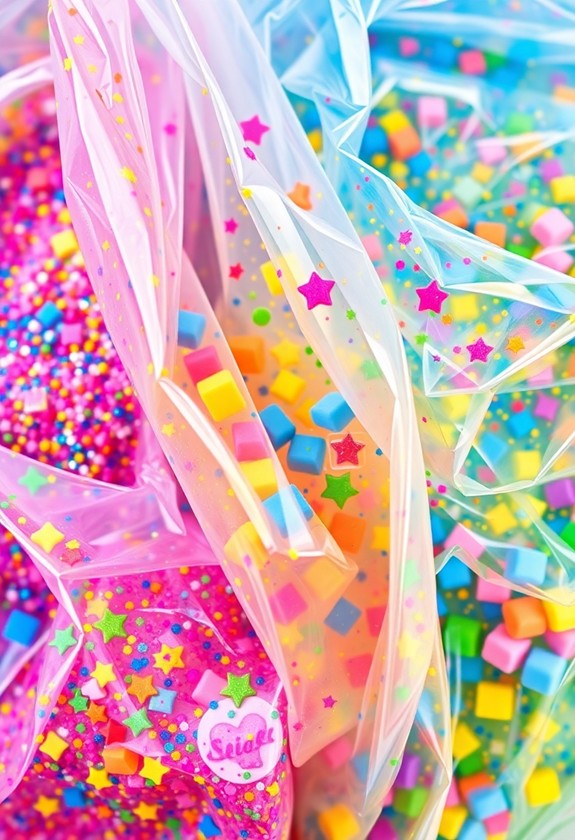
Numerous squishy emotion bags offer toddlers a tactile way to examine feelings. They're a blast to make and discover! Here's how to create these fun, sensory tools:
- Fill ziplock bags with colorful hair gel
- Add small objects like buttons or glitter
- Seal tightly and tape edges for safety
These bags are perfect for fostering emotional expression and can be tailored to various sensory needs. Now, let's get squishing! Encourage your little one to poke, prod, and squish the bags as you discuss emotions. Is the red bag making them feel angry? Does the blue one calm them down? It's time to get hands-on with feelings!
Pro tip: Use different textures for each emotion. Rough pebbles for anger, smooth beads for calm. Your toddler will love the sensory adventure!
Scented Emotional Art
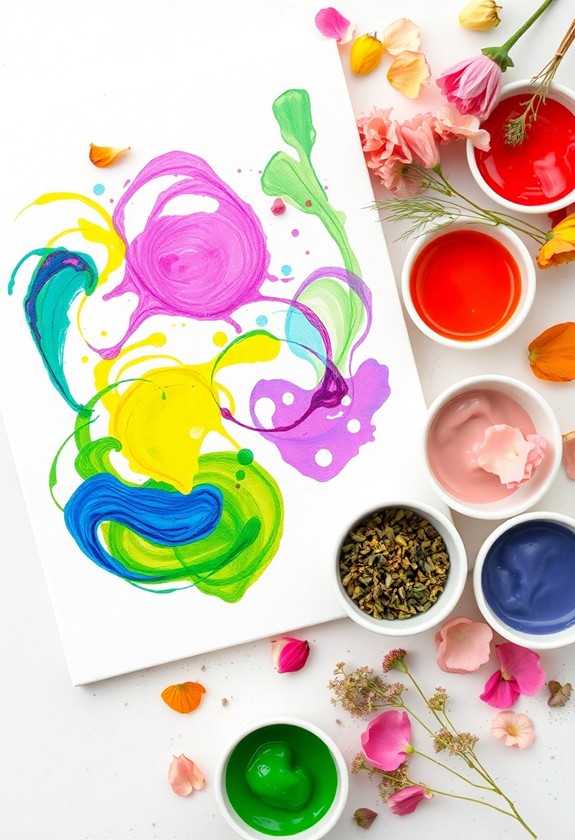
Scented art brings a whole new dimension to emotional expression for toddlers. It's an exciting way to engage their senses and help them investigate their feelings! You'll love watching your little one create masterpieces during learning about emotions. These activities not only improve fine motor skills but also promote creativity and imagination in young children.
Three fantastic scented art activities to try:
- Emotion-scented finger paint: Mix different scents into paint colors to represent emotions (e.g., lavender for calm, citrus for happy).
- Scented playdough faces: Create playdough with various scents and help your toddler mold emotional expressions.
- Smell-and-draw: Offer scented markers or crayons and encourage your child to draw what each smell makes them feel.
These activities are not only fun but also help develop sensory awareness and emotional intelligence. Your toddler will have a blast investigating the connection between scents and feelings during creating beautiful, aromatic art!
Music-Inspired Emotion Drawing
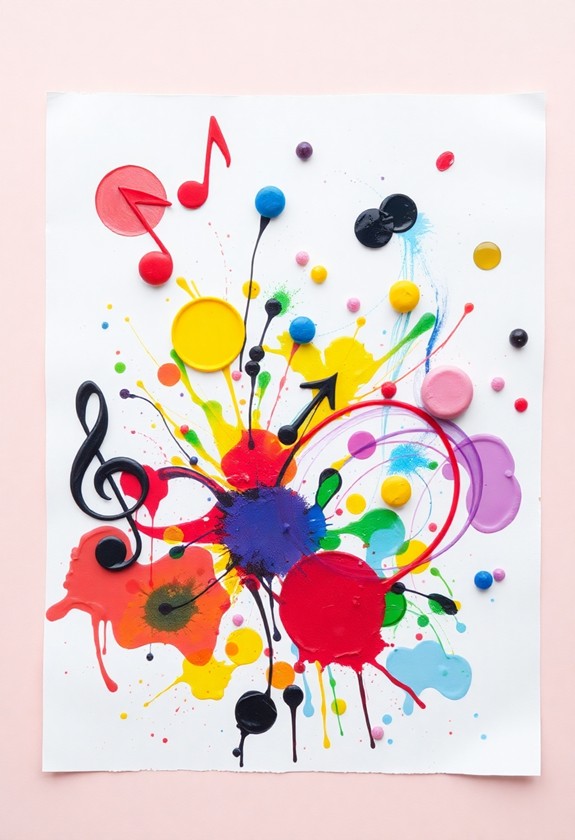
Music has a powerful ability to evoke emotions in people of all ages, including toddlers. It's time to release your little one's inner artist with music-inspired emotion drawing! Here's how to do it:
- Choose a variety of music genres (classical, pop, jazz)
- Play a song and ask your toddler how it makes them feel
- Encourage them to draw their emotions using bold colors
Watch as your child scribbles happily to upbeat tunes or creates slow, wavy lines to soothing melodies. This activity isn't just fun – it's a great way to help toddlers express and understand their feelings!
Pro tip: Use washable markers or crayons for easy clean-up. And don't forget to join in! Your enthusiasm will inspire your little Picasso to create masterpieces that are music to your eyes!
Sensory Bottles for Feelings
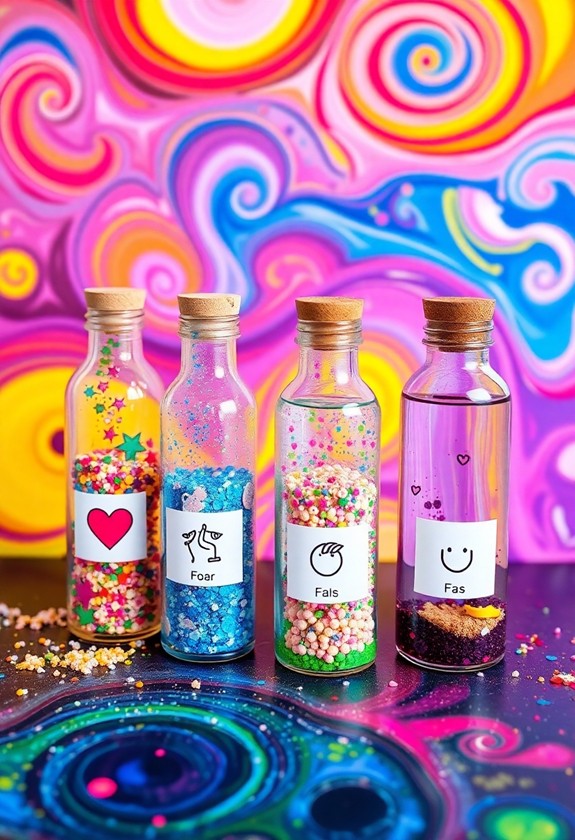
Plunge into the world of emotions with sensory bottles for feelings! These magical containers are perfect for helping your little one investigate and understand their emotions. You'll love watching their eyes light up as they shake, turn, and observe these enchanting creations!
Here's how to make your own emotional sensory bottles:
- Choose your emotions: Pick 3-4 feelings to represent, like happiness, anger, or calm.
- Select your materials: Use water, glitter, food coloring, and small objects that represent each emotion.
- Create and seal: Fill bottles with your chosen items, add water, and securely seal the lids.
Let your toddler investigate these emotion-filled wonders! They'll love watching the glitter swirl and settle, just like their feelings. It's a fun, tactile way to learn about emotions and self-regulation. Plus, it's a great calming tool for those tricky toddler moments!
Emotion-Based Sand Art
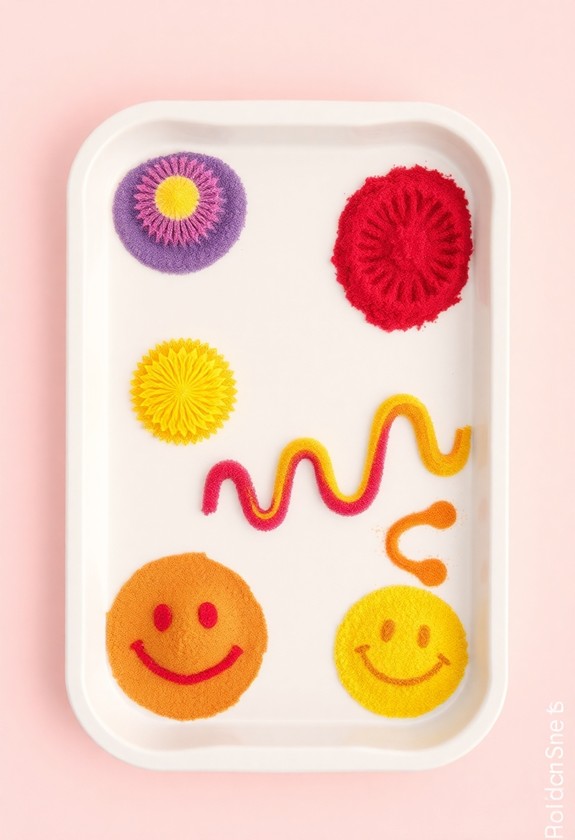
Plunge into the colorful world of emotion-based sand art with your toddler! This exciting activity lets little ones express their feelings through lively colors and textures. Here's how to get started:
- Gather colored sand, clear jars, and emotion cards.
- Show your tot an emotion card and ask, "How does this make you feel?"
- Let them choose sand colors that match their feelings.
- Layer the sand in the jar, creating a unique emotional terrain!
As you create, chat about the emotions and colors. "Feeling blue? Let's add some happy yellow!" This hands-on experience helps kiddos understand and express their feelings in a fun, tactile way. Plus, you'll end up with a gorgeous keepsake of their emotional adventure. So, get ready to sand-sify those feelings and watch your little one's emotional intelligence grow!
Curious Little Questions
How Can I Adapt These Activities for Children With Sensory Sensitivities?
Did you know that adapting activities can make a world of difference for kids with sensory sensitivities? It's true! Here's how you can do it:
- Offer choices: Let them pick textures they're comfortable with.
- Go slow: Introduce new sensations gradually.
- Create a calm space: Set up a quiet corner for breaks.
- Use familiar items: Start with materials they already like.
- Be flexible: It's okay to modify or skip parts they find challenging.
What Age Range Are These Activities Most Suitable For?
You'll love these activities for kids ages 2-5! They're perfect for little ones who are just starting to investigate their emotions and sensory experiences. But don't worry if your child is a bit younger or older – you can easily adapt them! For younger tots, simplify the steps and offer more guidance. For older kiddos, make the activities more complex and challenging. Remember, every child develops differently, so trust your instincts and have fun!
Are There Any Safety Precautions to Consider During These Sensory Activities?
Safety first, always! When doing sensory activities, you'll want to keep a few things in mind:
- Watch out for choking hazards – no small objects!
- Supervise closely, especially with water or messy play
- Use non-toxic, edible materials when possible
- Keep allergens in mind (e.g., wheat, dairy)
- Avoid sharp edges or breakable items
- Have a first-aid kit handy, just in case
How Can I Incorporate These Activities Into a Daily Emotional Learning Routine?
Time to paint your day with emotional learning! You can easily weave these activities into your routine:
- Start the day with a quick emotion check-in using colorful cards
- Use playdough or finger painting during snack time to express feelings
- Create a daily "mood jar" with colored sand or water
- End the day with a calming sensory bottle before bedtime
Mix it up and have fun! You'll be amazed at how quickly your little one's emotional intelligence grows. It's like watching a flower bloom right before your eyes!
What Are the Best Ways to Discuss Emotions During These Art Activities?
Discussing emotions during art activities can be so much fun! Here's how you can make it awesome:
- Ask open-ended questions: "How does this color make you feel?"
- Use "emotion words": Happy, sad, excited, angry – examine them all!
- Share your own feelings: "Wow, this blue paint makes me feel calm!"
- Play "guess the emotion" games with their creations
- Create an "emotion chart" with colors and faces
- Encourage expression: "Can you draw how you're feeling right now?"


